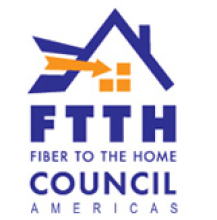Fiber or Fireplace? Study Links FTTH to Increased Housing Prices
Only one in 11 households in the United States have fiber-to-the-home (FTTH) subscriptions, according to a 2014 Broadband Communities primer, but that might begin to change as more and more studies show the economic benefits of fiber. Most recently, the Fiber To The Home Council Americas funded a study in conjunction with the University of Colorado and Carnegie Mellon that showed a fiber dividend of $5,437 on a $175,000 home. Fierce Telecom reported on the results:
The boost to the value of a typical home – $5,437 – is roughly equivalent to adding a fireplace, half of a bathroom or a quarter of a swimming pool to the home.
The results of the study, which compared roughly 500,000 housing prices over the course of two years, have made their rounds on the Internet, even receiving coverage in the Wall Street Journal. It builds upon a small, but growing, body of research that links fiber deployments in homes and multiple dwelling units (MDUs) to economic growth.
As more research on housing prices and home Internet access surfaces, the value of FTTH deployments appears to be on the rise. A 2014 study by the consulting firm RVA LLC revealed a $5,250 increase in the value of a $300,000 home. Now, according to the newest study, a similar increase in value can be seen in homes worth half this amount.
The benefits of FTTH networks are not just relegated to single family homes. In 2014, the FTTH Council released a report that showed a 1.1 percent increase in GDP in communities that deploy gigabit broadband services, representing about $1.4 billion in total in the 14 gigabit communities studied.
The Council also conducted a survey in 2014 that looked at the effect of FTTH on multiple dwelling units, which we covered in an April story. Access to fiber increased sale and rental prices in MDUs by three and eight percent, respectively.




